White Garden Tips: Creating a Serene Outdoor Oasis
Creating a white garden can bring a sense of peace and elegance to your outdoor space. Whether you have a small yard or a sprawling estate, white flowers and plants can transform your garden into a serene retreat.
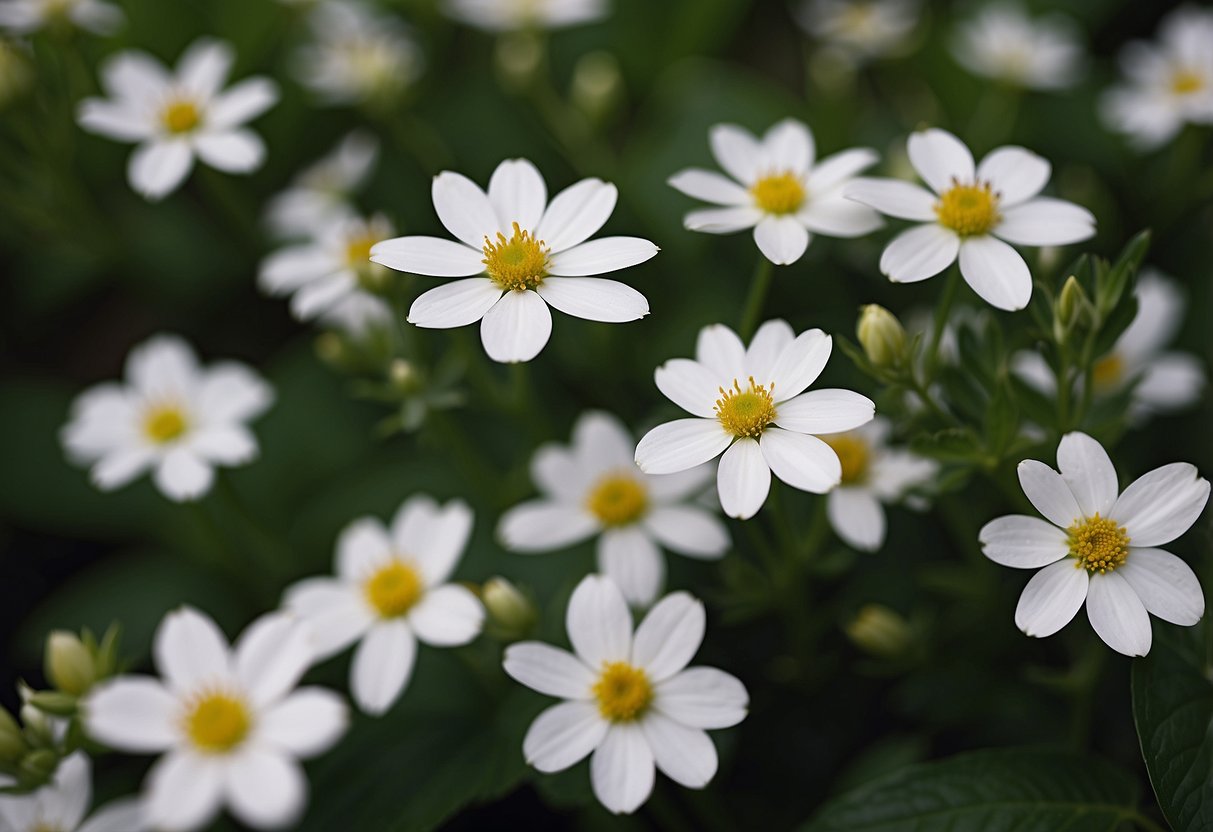
How do you achieve a stunning white garden that thrives year-round? This article will provide practical tips and ideas for designing, planting, and maintaining a beautiful white-themed garden that flourishes in every season.
1) Use White Hydrangeas

White hydrangeas add a bright, clean look to any garden. Keeping hydrangeas white involves careful soil management. Aim for a soil pH between 6.0 and 6.2 to maintain their pure color.
Water them regularly but avoid root rot by not overwatering. Fertilize with a balanced, slow-release fertilizer in early spring when new growth appears to keep the blooms vibrant and white.
2) Plant Snowdrops for Winter

Snowdrops are a delightful choice for winter gardens. They bloom early, often in January or February, adding a splash of white when most other flowers are still dormant.
To plant snowdrops, loosen the soil and mix in compost or dried manure. Make sure to plant the bulbs with the pointy end up about three inches deep.
You can grow them in pots or directly in the garden. Just don’t let the soil dry out completely or freeze solid. Snowdrops look lovely in groups, so consider planting several together.
3) Incorporate White Tulips
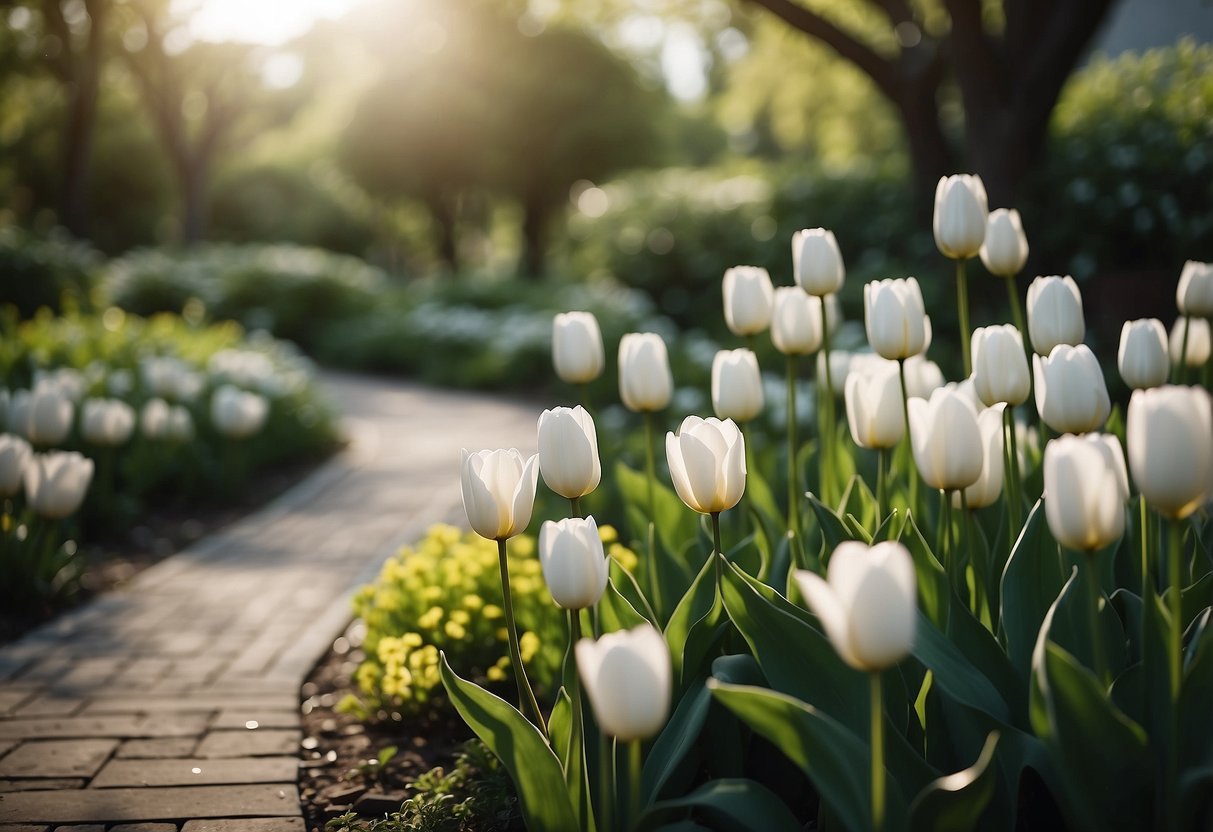
White tulips can add a touch of elegance to your garden. They are versatile and pair well with other plants. You can use them to create a peaceful and calming atmosphere.
Consider planting the White Triumphator Lily, which blooms in mid to late spring. Its tall stems make it perfect for garden borders or as a striking cut flower.
Another great option is the Hakuun tulip. This variety has snow-white petals and stands up to hot temperatures. It blooms in mid-spring, giving your garden a timeless and elegant look.
4) Add White Daffodils in Spring
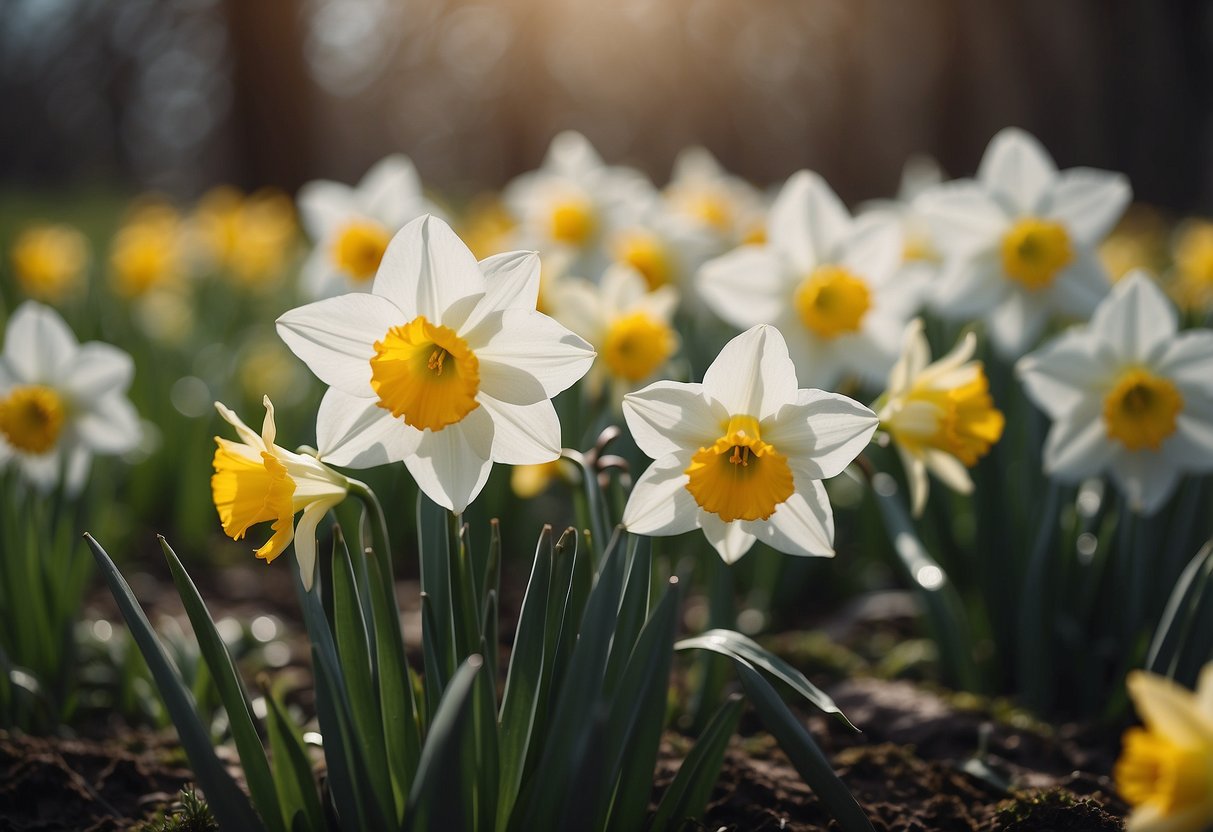
White daffodils bring a clean, fresh look to your garden in spring. They are easy to grow and care for.
Plant the bulbs 6-8 inches deep and 4-6 inches apart. Clusters of 3-5 bulbs look best.
Make sure the soil is well-draining and has a neutral pH of around 7.0. Adding compost or peat moss can help.
Find more tips for growing white daffodils here.
5) Consider White Azaleas

White Azaleas are a beautiful addition to any garden. They offer bright, elegant blooms that can lighten up shady corners.
These shrubs thrive in partial shade and well-drained, acidic soil. Regular watering and feeding ensure they remain healthy and vibrant.
Incorporate White Azaleas to create stunning focal points. They also pair well with other plants, adding texture and visual interest to your landscape. Learn more about growing these lovely plants at The Garden Geeks.
6) Plant White Roses

Adding white roses to your garden brings elegance and charm. Roses like the Iceberg rose are popular for their abundant blooms and versatility.
Consider planting the Bridal Sunblaze for a compact choice, perfect for small spaces. If you’re looking for a climbing variety, the Climbing Iceberg is a great option for arbors and trellises.
For ground cover, try the Flower Carpet White rose, which is known for its disease resistance and continuous blooming. White roses add a timeless touch to any garden.
7) White Lilies for Summer
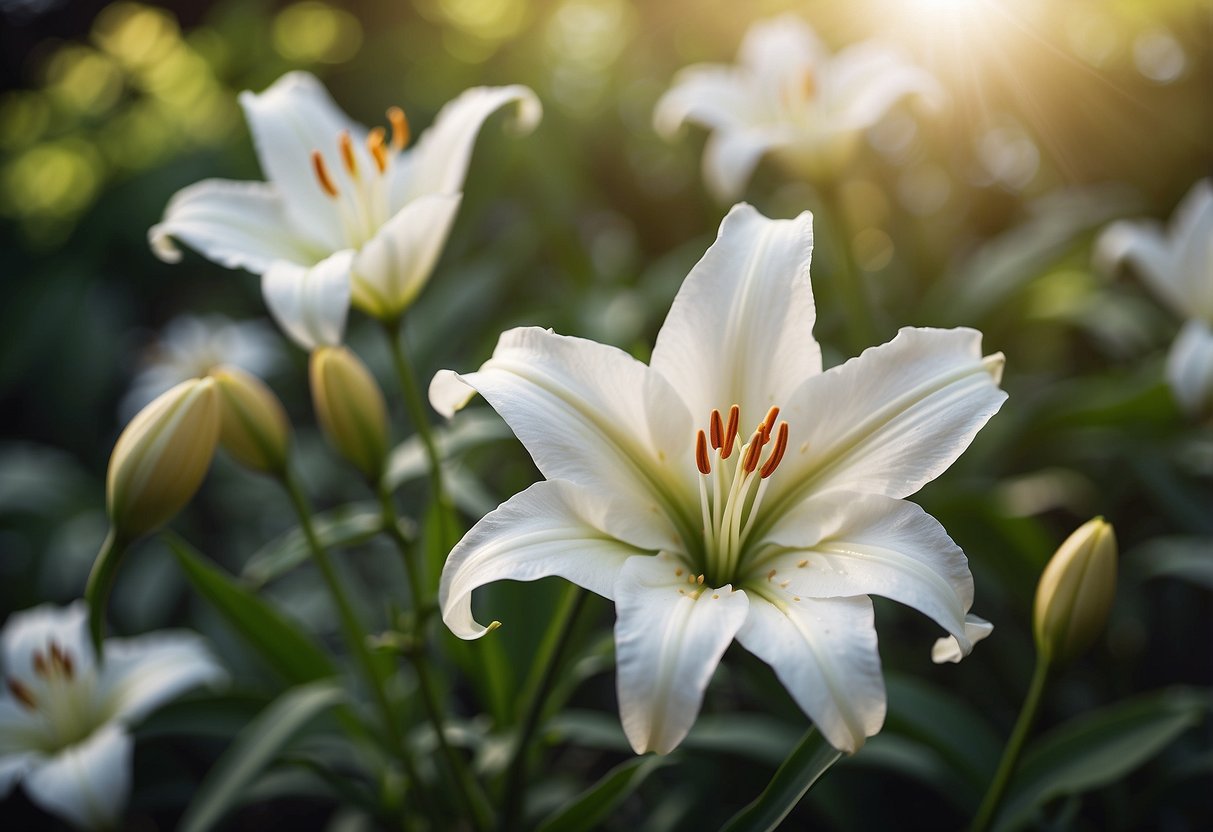
White lilies are a stunning addition to your summer garden. Their elegance and beauty can brighten up any space.
The ‘Silk Road’ lily is a popular choice, with its white blooms and crimson red throat. It can grow up to 7 feet tall and thrives in USDA zones 4-8.
Another great option is the ‘Casa Blanca’ lily. This hybrid oriental lily is a favorite among gardeners for its large, fragrant flowers. It descended from Korean and Japanese lilies and is perfect for summer gardens.
8) Use White Peonies

White peonies are a beautiful addition to any garden. They bring elegance and a touch of sophistication with their large, intricate blooms.
Planting these peonies in an area that gets 6 to 8 hours of sun ensures they will thrive. Some popular varieties include Bowl of Cream and Bridal Shower.
White peonies are also great for cut flowers, allowing you to enjoy their beauty indoors as well.
9) Try White Lavender
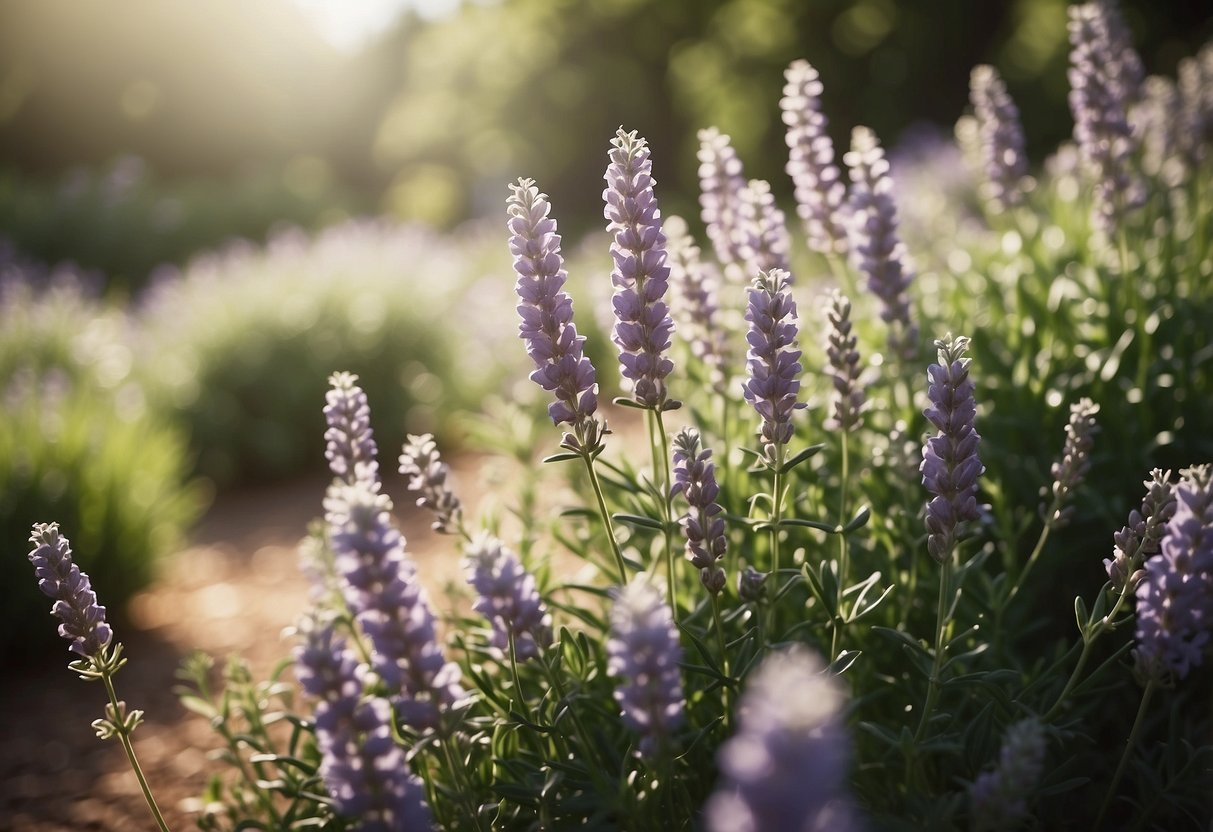
White lavender can add a touch of elegance and calm to your garden. It’s great for creating a serene atmosphere.
This plant thrives in sunny spots, needing at least 10 hours of sunlight daily. Plant it in well-draining soil to avoid root rot.
You can find popular varieties like Nana Alba lavender or Anouk White to add to your garden.
10) Grow White Irises

White irises add a touch of elegance to any garden. To start, choose a sunny spot with well-drained soil. These flowers thrive best when spaced 12 to 18 inches apart to allow for proper growth and air circulation.
When planting, loosen the soil to a depth of 12-15 inches and mix in some compost or well-rotted manure. Dig a shallow hole and cover the rhizome with about an inch of soil.
Water the irises regularly but avoid overwatering, as they prefer slightly dry conditions. In late fall, after a frost, cut back the leaf fans to about 2 to 4 inches above the ground. For more detailed tips, check out Growing White Irises.
Choosing The Right Plants For A White Garden

For a stunning white garden, select plants that provide beauty throughout the year. Use perennials, annuals, shrubs, trees, climbers, and vines to create a visually pleasing space with plenty of texture and interest.
Perennials And Annuals
Perennials return year after year, providing a stable foundation for your garden. Consider planting Geranium phaeum ‘Album’ which can rebloom if cut back after its first bloom. Hosta ‘Royal Standard’ and white lavender like Angustifolia ‘Arctic Snow’ are also great since they offer long-lasting blooms.
Annuals are useful for filling gaps and adding seasonal bursts of color. White petunias and alyssum can bring brightness to your garden every year. Cosmos and white zinnias are also excellent choices, offering prolonged flowering periods through the summer.
Shrubs And Trees
Shrubs and trees provide structure and height to your white garden. Camellia bushes not only have beautiful flowers but also evergreen foliage, making them a great addition. These should be planted in well-drained, acidic soil and kept consistently moist, especially during dry spells.
For trees, consider the weeping blue Atlas cedar, which can grow up to 15 feet tall and provides a striking visual element. Another option is the weeping silver pear (Pyrus salicifolia ‘Pendula’), which adds both height and elegant, silvery leaves.
Climbers And Vines
Climbers and vines help cover walls, fences, and structures with lush foliage and flowers. Climbing white roses such as Rosa ‘Iceberg’ can add a timeless charm. They need strong support and regular pruning to maintain their shape and encourage blooming.
Clematis is another good choice, particularly varieties like Clematis ‘Henryi’ which has large white flowers. White jasmine (Jasminum officinale) provides not only beautiful flowers but also a delightful fragrance, making it an excellent option for a garden located near seating or walking areas.
Choosing the right mix of plants ensures your white garden remains beautiful throughout the seasons.
Designing Your White Garden

Creating a white garden requires thoughtful planning around color contrast, texture, layout, structure, and lighting. These elements help maintain visual interest and harmony in your garden space.
Color Contrast And Texture
Using color contrasts and textures is crucial for making your white garden visually appealing. Pairing white flowers with dark green backdrops, like boxwood or holly, makes the white colors stand out more.
Textures also play a key role. Mix plants with different leaf shapes and sizes to add depth. You can include silver foliage for an appealing contrast. Add in blue-needled evergreens like weeping blue Atlas cedar or ‘Blue Star’ juniper to introduce subtle variations without straying from the white theme.
Garden Layout And Structure
The layout of your garden determines its overall feel and usability. A strong layout is essential for a cohesive look. Consider a formal layout with paths and box hedges in a grid pattern, similar to the famous garden at Sissinghurst Castle.
This provides structure and ensures your garden looks tidy year-round. You might also opt for informal patterns using curved paths and more naturalistic plantings.
Raised beds or terraces can add levels, creating a sense of depth and interest. Planned focal points—like a white bench or birdbath—anchor the design and provide spots to enjoy the view.
Lighting And Ambiance
Proper lighting can transform your white garden, especially at night. Use soft, ambient lighting to highlight key features and create a magical atmosphere.
Moonlighting, where lights are placed high up to mimic natural moonlight, works wonderfully. Place lights under trees or along pathways to illuminate blooms without overwhelming them.
For evening gardens, consider adding solar lights or lanterns among the plants. These light sources not only ensure pathways are safe but also enhance the beauty of white flowers, making them glow in the dark.
String lights or spotlights can add a romantic feel, perfect for evening relaxation. Good lighting makes your garden a beautiful and inviting space both day and night.







